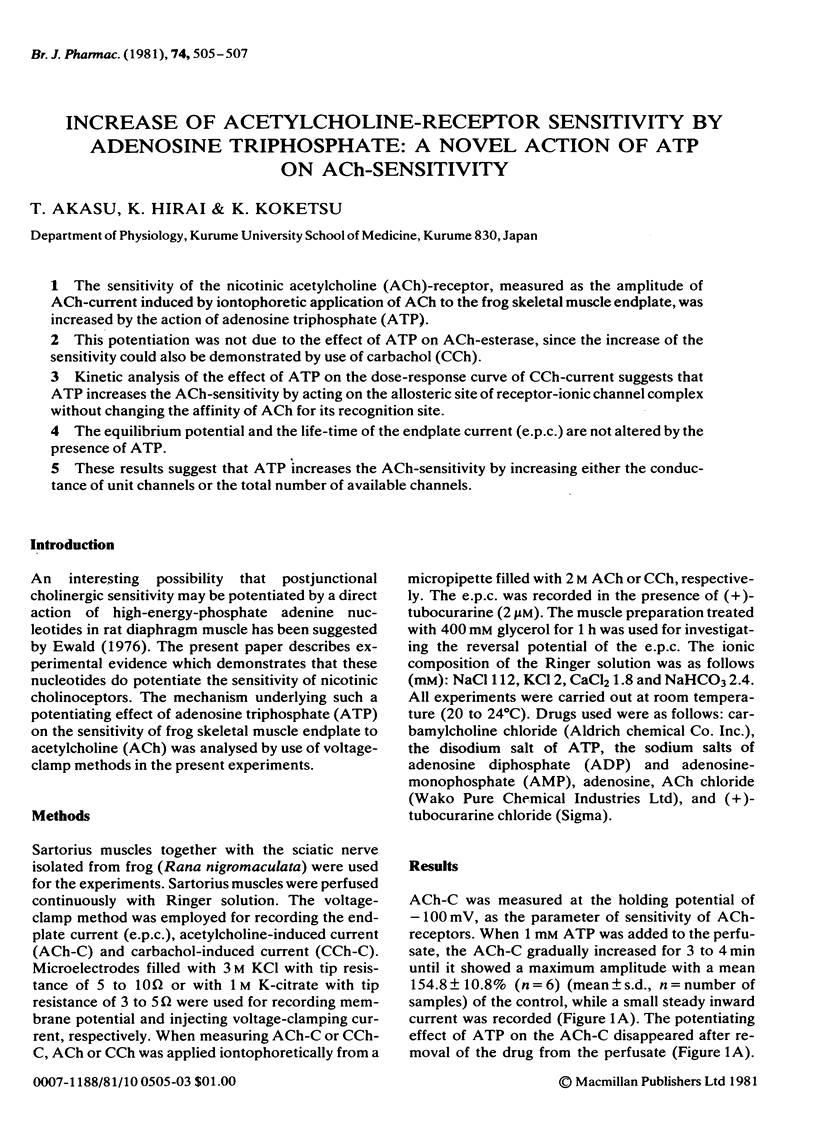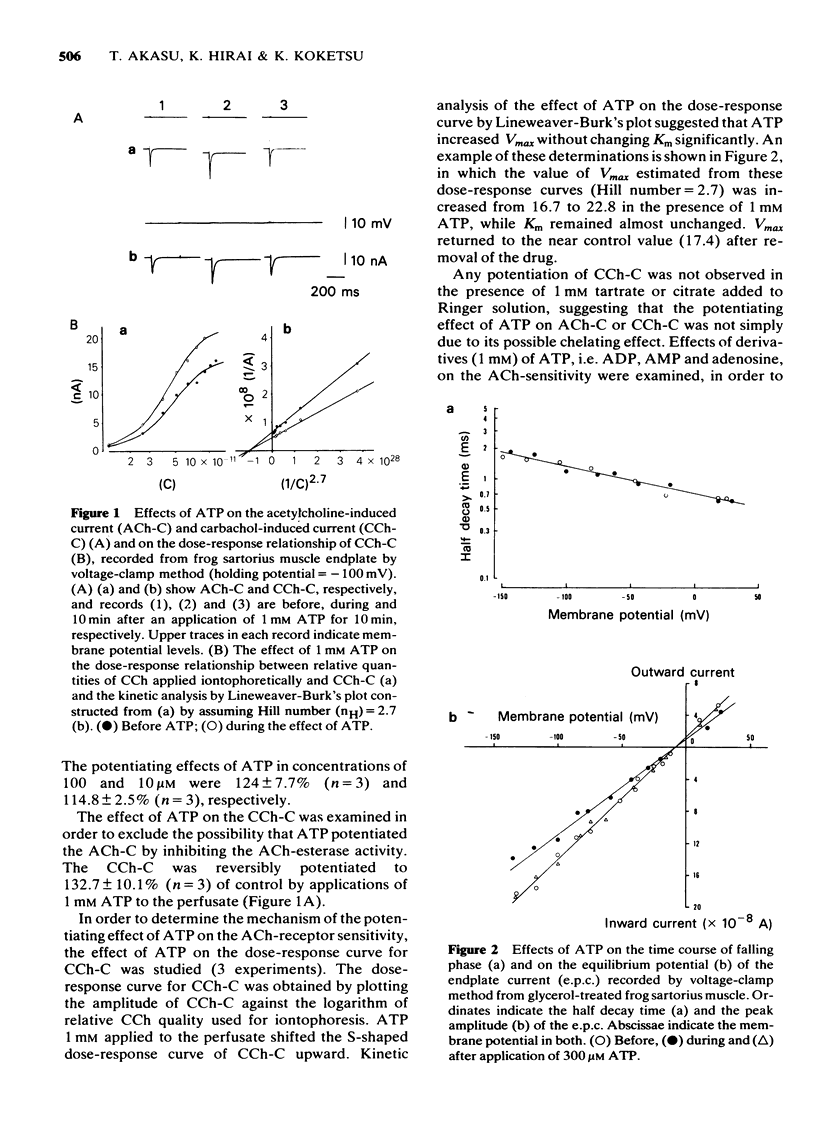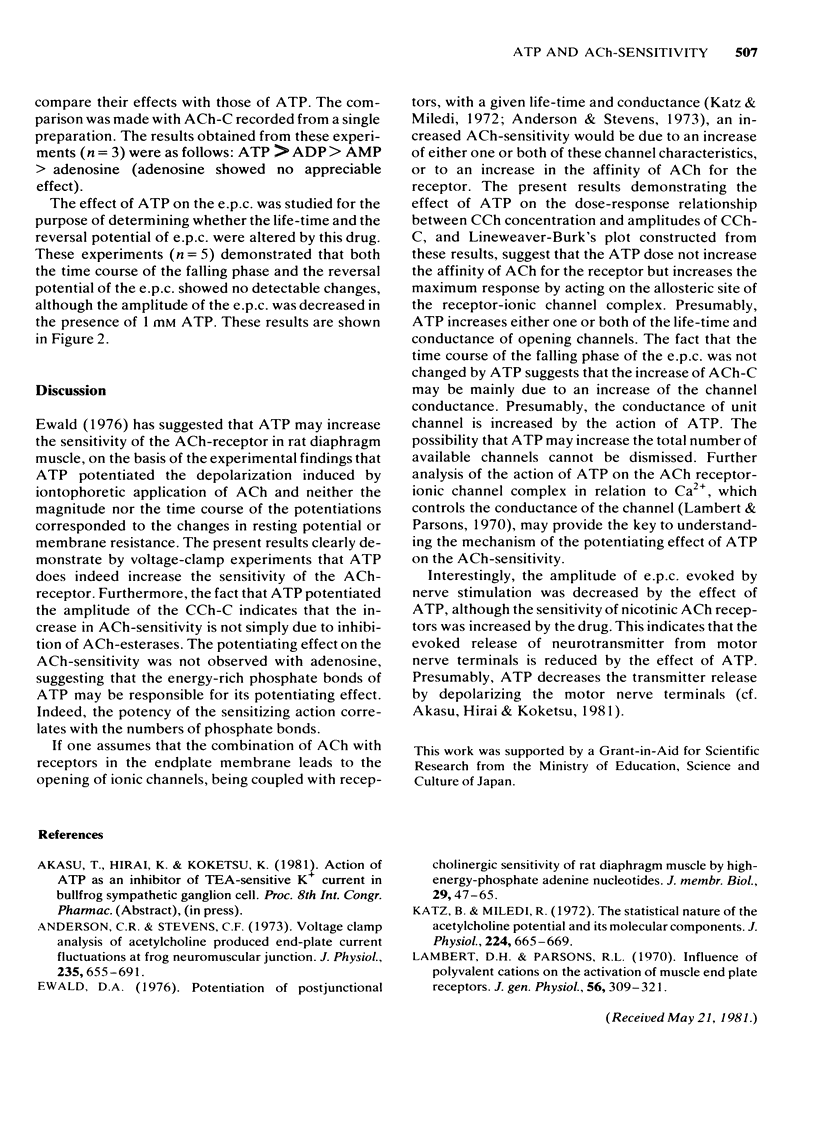Abstract
1. The sensitivity of the nicotinic acetylcholine (ACh)-receptor, measured as the amplitude of ACh-current induced by iontophoretic application of ACh to the frog skeletal muscle endplate, was increased by the action of adenosine triphosphate (ATP). 2. This potentiation was not due to the effect of ATP on ACh-esterase, since the increase of the sensitivity could also be demonstrated by use of carbachol (CCh). 3. Kinetic analysis of the effect of ATP on the dose-response curve of CCh-current suggests that ATP increases the ACh-sensitivity by acting on the allosteric site of receptor-ionic channel complex without changing the affinity of ACh for its recognition site. 4. The equilibrium potential and the life-time of the endplate current (e.p.c.) are not altered by the presence of ATP. 5. These results suggest that ATP increases the ACh-sensitivity by increasing either the conductance of unit channels or the total number of available channels.
Full text
PDF


Selected References
These references are in PubMed. This may not be the complete list of references from this article.
- Anderson C. R., Stevens C. F. Voltage clamp analysis of acetylcholine produced end-plate current fluctuations at frog neuromuscular junction. J Physiol. 1973 Dec;235(3):655–691. doi: 10.1113/jphysiol.1973.sp010410. [DOI] [PMC free article] [PubMed] [Google Scholar]
- Ewald D. A. Potentiation of postjunctional cholinergic sensitivity of rat diaphragm muscle by high-energy-phosphate adenine nucleotides. J Membr Biol. 1976 Oct 20;29(1-2):47–65. doi: 10.1007/BF01868951. [DOI] [PubMed] [Google Scholar]
- Katz B., Miledi R. The statistical nature of the acetycholine potential and its molecular components. J Physiol. 1972 Aug;224(3):665–699. doi: 10.1113/jphysiol.1972.sp009918. [DOI] [PMC free article] [PubMed] [Google Scholar]
- Lambert D. H., Parsons R. L. Influence of polyvalent cations on the activation of muscle end plate receptors. J Gen Physiol. 1970 Sep;56(3):309–321. doi: 10.1085/jgp.56.3.309. [DOI] [PMC free article] [PubMed] [Google Scholar]


